Is it possible to deduct energy star appliances in 2025? This is the key question for homeowners who want to save money and help the environment.
In this article, we delve into the world of energy star appliances, exploring their eligibility for deductions, federal tax credits, state-specific incentives, and the requirements for certification.
We’ll also highlight the cost savings, benefits of energy-efficient home improvements, and appliance rebates.
Get ready to master the future outlook for energy star deductions and make informed choices for a greener tomorrow.

Key Takeaways
- Energy Star certified appliances provide significant energy savings.
- Meeting IRS Energy Star requirements allows for tax benefits.
- Government provides tax credits and incentives for energy efficiency.
- Purchasing and installing eligible Energy Star products allows for tax deductions.
Importance of Energy Star Appliances
One of the most important factors to consider when purchasing new appliances is the significant energy savings that come with Energy Star certified products.
The Energy Star rating is a measure of an appliance’s energy efficiency, indicating how much energy it consumes compared to similar models. Appliances with higher energy star ratings consume less energy, resulting in lower utility bills and reduced environmental impact.
The energy star rating provides consumers with a reliable benchmark to compare different appliances and make informed purchasing decisions. By choosing appliances with a higher energy star rating, consumers can significantly reduce their energy consumption and contribute to a more sustainable future.
It’s crucial to prioritize energy efficiency when selecting appliances to not only save money but also protect the environment.
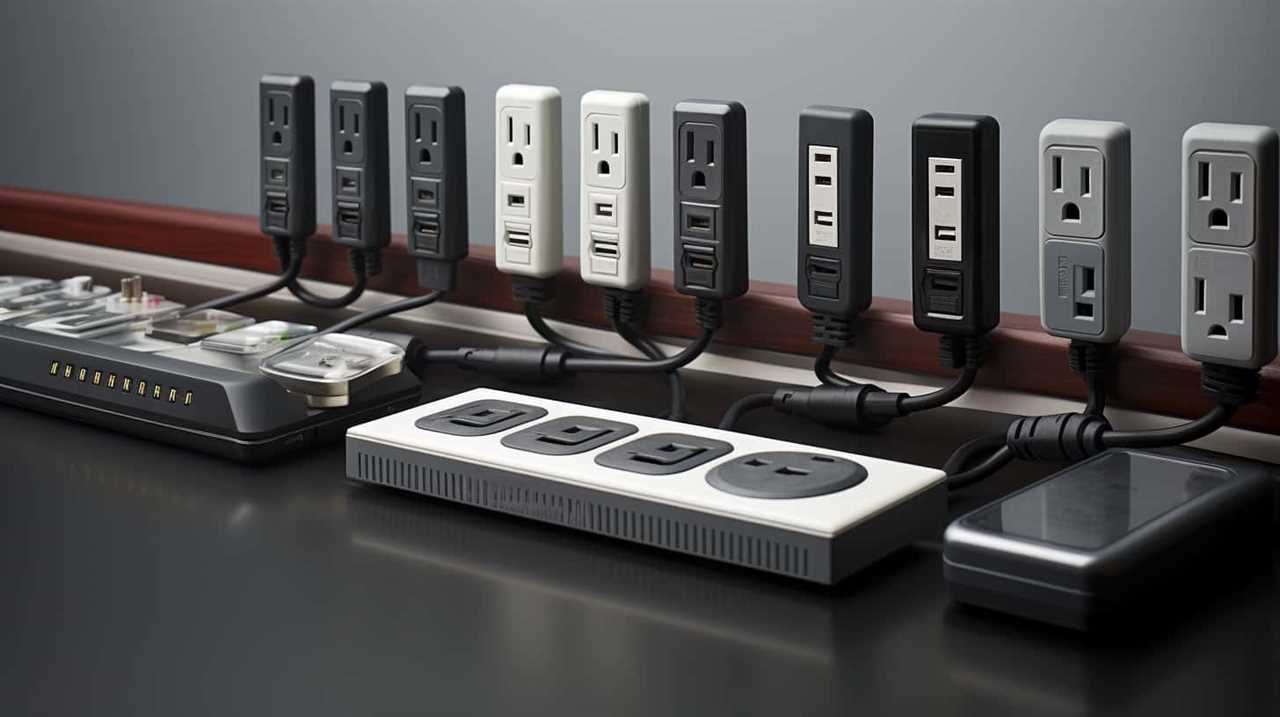
Eligibility for Energy Star Deductions
When it comes to eligibility for Energy Star deductions, the IRS has specific requirements that must be met. These requirements include using energy-efficient products that are certified by Energy Star. By meeting these requirements, individuals and businesses can enjoy tax benefits for their energy efficiency efforts.
Eligible Energy Star products include appliances, heating and cooling systems, and even windows and doors that meet the necessary efficiency criteria.
IRS Energy Star Requirements
To qualify for Energy Star deductions, we must meet the IRS Energy Star requirements. These requirements are necessary to ensure that the appliances and products we purchase are energy-efficient and eligible for tax credits.
Here are the key criteria for IRS Energy Star certification:
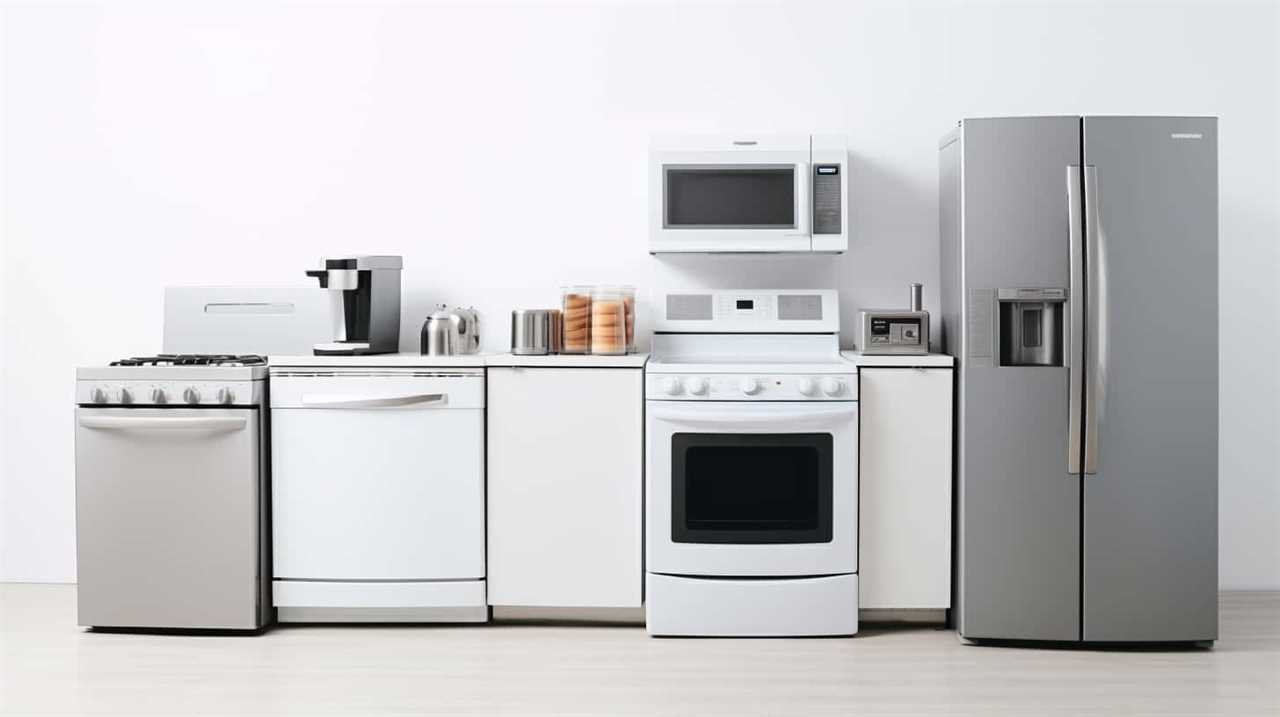
- Energy Efficiency: The appliances must meet the energy efficiency standards set by the Environmental Protection Agency (EPA) and the Department of Energy (DOE).
- Performance: The appliances must perform as well as or better than their non-Energy Star counterparts.
- Third-Party Testing: The appliances must undergo testing by an EPA-recognized third-party testing laboratory.
- Documentation: We need to keep all the necessary documentation, including the Energy Star label and the manufacturer’s certification statement.
Tax Benefits for Efficiency
For eligibility for Energy Star deductions, we can benefit from tax incentives for energy efficiency. The government provides tax credits and other incentives to encourage individuals and businesses to invest in energy-efficient products and practices. These incentives help offset the initial cost of purchasing and installing energy-efficient appliances, systems, and equipment. By taking advantage of these tax benefits, individuals can reduce their tax liability while also saving money on energy bills in the long run.
To give you an idea of the potential tax savings, here is a table outlining some of the federal tax credits available for energy-efficient improvements:
| Type of Improvement | Maximum Tax Credit |
|---|---|
| Solar panels | $1,000 |
| Energy-efficient windows | $200 |
| High-efficiency heating and cooling systems | $300 |
| Energy-efficient doors | $500 |
| Insulation | 10% of the cost, up to $500 |
These tax credits can be claimed by individuals on their federal income tax returns. It’s important to consult with a tax professional or refer to IRS guidelines to ensure eligibility and proper documentation.
Understanding the tax benefits for energy efficiency can help us make informed decisions about investing in eligible Energy Star products. By taking advantage of these incentives, we can contribute to a more sustainable future while enjoying potential tax savings.

Eligible Energy Star Products
We can continue exploring the topic of tax benefits for energy efficiency by discussing the eligibility of Energy Star products for deductions. Energy Star tax incentives provide an opportunity for individuals and businesses to save money while also promoting energy-efficient practices.
Here are some key points about eligible Energy Star products:
- Energy Star product list: The Energy Star program covers a wide range of products, including appliances, electronics, heating and cooling systems, lighting, and windows. The list is regularly updated to include new products that meet the program’s energy efficiency standards.
- Tax deductions: By purchasing and installing eligible Energy Star products, taxpayers can claim deductions on their federal tax returns. These deductions can help offset the initial cost of purchasing energy-efficient appliances and systems.
- Requirements: To qualify for the Energy Star tax incentives, products must meet specific energy efficiency criteria set by the Environmental Protection Agency (EPA) and the Department of Energy (DOE).
- Certification: Energy Star products are labeled with the Energy Star logo, making it easy for consumers to identify eligible products.
Understanding the eligibility of Energy Star products for deductions is crucial for maximizing tax benefits and promoting energy efficiency.
Now, let’s move on to discussing federal tax credits for energy efficiency.

Federal Tax Credits for Energy Efficiency
Our government offers significant tax credits for energy-efficient appliances, making it easier for us to save money while reducing our environmental impact. These tax incentives are designed to encourage energy-saving home upgrades, such as installing energy-efficient windows, doors, insulation, and HVAC systems. By investing in these upgrades, homeowners can not only benefit from lower energy bills but also contribute to the overall reduction of greenhouse gas emissions.
To provide a clear overview of the available tax credits, here is a table summarizing the federal tax incentives for energy efficiency:
| Energy-Saving Home Upgrade | Maximum Tax Credit |
|---|---|
| Energy-efficient windows and doors | $200 |
| Insulation and weatherization | 10% of cost |
| HVAC systems | $300 – $500 |
| Solar energy systems (residential) | 26% of cost |
It’s important to note that these tax credits are subject to specific criteria and eligibility requirements. To ensure you qualify for the credits, consult with a tax professional or visit the official IRS website for more information.
State-Specific Energy Star Incentives
To explore additional benefits for energy-efficient upgrades, let’s now delve into the realm of state-specific Energy Star incentives. Many states offer various incentives and programs to encourage energy-saving practices and the use of Energy Star appliances. These state-specific incentives can provide homeowners and businesses with financial incentives, rebates, and tax credits for purchasing and installing energy-efficient appliances and making energy-saving improvements to their properties.
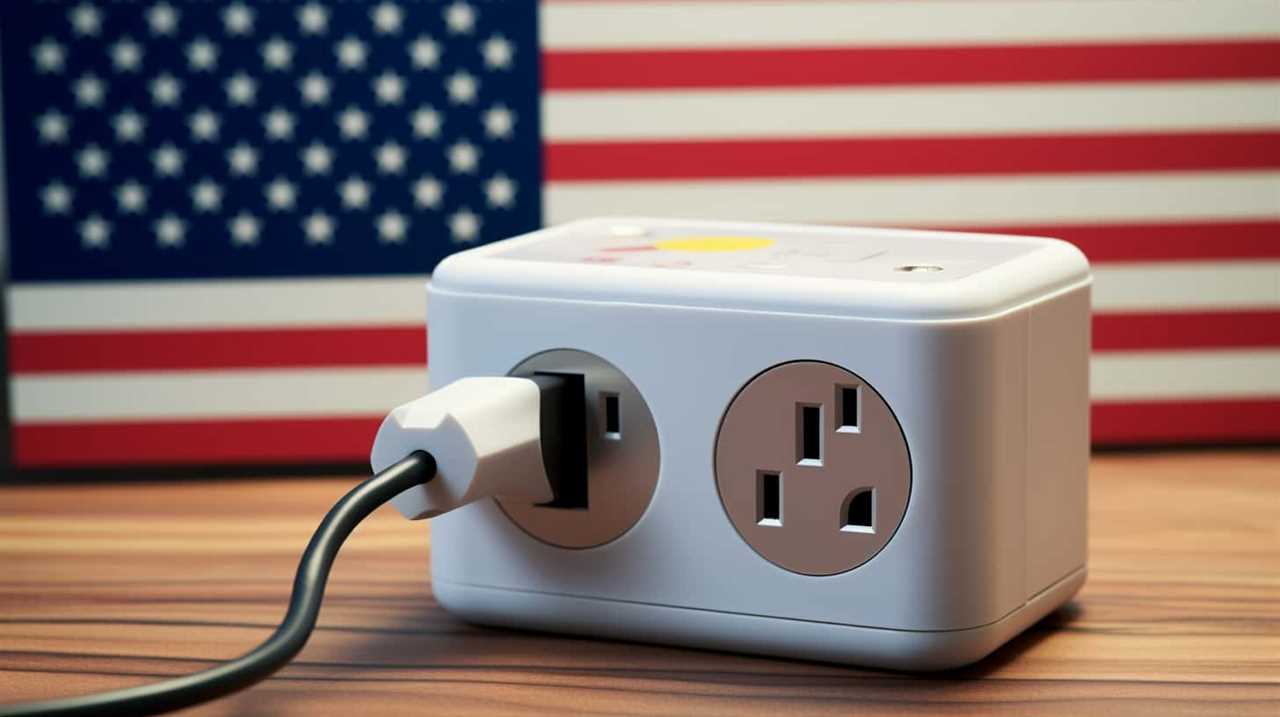
Some examples of state-specific energy-saving programs and incentives include:
- Rebates for purchasing Energy Star appliances or upgrading to energy-efficient HVAC systems.
- Tax credits for installing solar panels or other renewable energy systems.
- Low-interest loans or financing options for energy-efficient home improvements.
- Free or discounted energy audits to identify areas for improvement and energy-saving recommendations.
These state-specific incentives can vary widely, so it’s important to research and understand the specific programs available in your state.
Now that we understand the potential state-specific incentives, let’s explore the requirements for Energy Star certification.
Requirements for Energy Star Certification
When it comes to Energy Star certification, there are specific qualifications that appliances must meet in order to receive the label. These qualifications include meeting certain energy efficiency standards set by the Environmental Protection Agency (EPA).

The certification process involves rigorous testing and verification to ensure that the appliances meet these standards. By choosing Energy Star certified appliances, consumers can enjoy the benefits of lower energy consumption, reduced utility bills, and a positive impact on the environment.
Energy Star Qualifications
We frequently evaluate the qualifications for Energy Star certification to ensure that our appliances meet the necessary requirements. To achieve Energy Star certification, appliances must meet strict criteria set by the energy star program.
Here are the key qualifications for energy star certification:
- Energy efficiency: Appliances must demonstrate significant energy savings compared to standard models.
- Performance: Energy Star appliances must deliver the same or better performance as their non-certified counterparts.
- Quality: These appliances must be reliable and built to last.
- Environmental impact: Energy Star products must reduce greenhouse gas emissions and other pollutants.
Certification Process Details
In the certification process for Energy Star appliances, we evaluate specific requirements to ensure that our products meet the necessary qualifications.
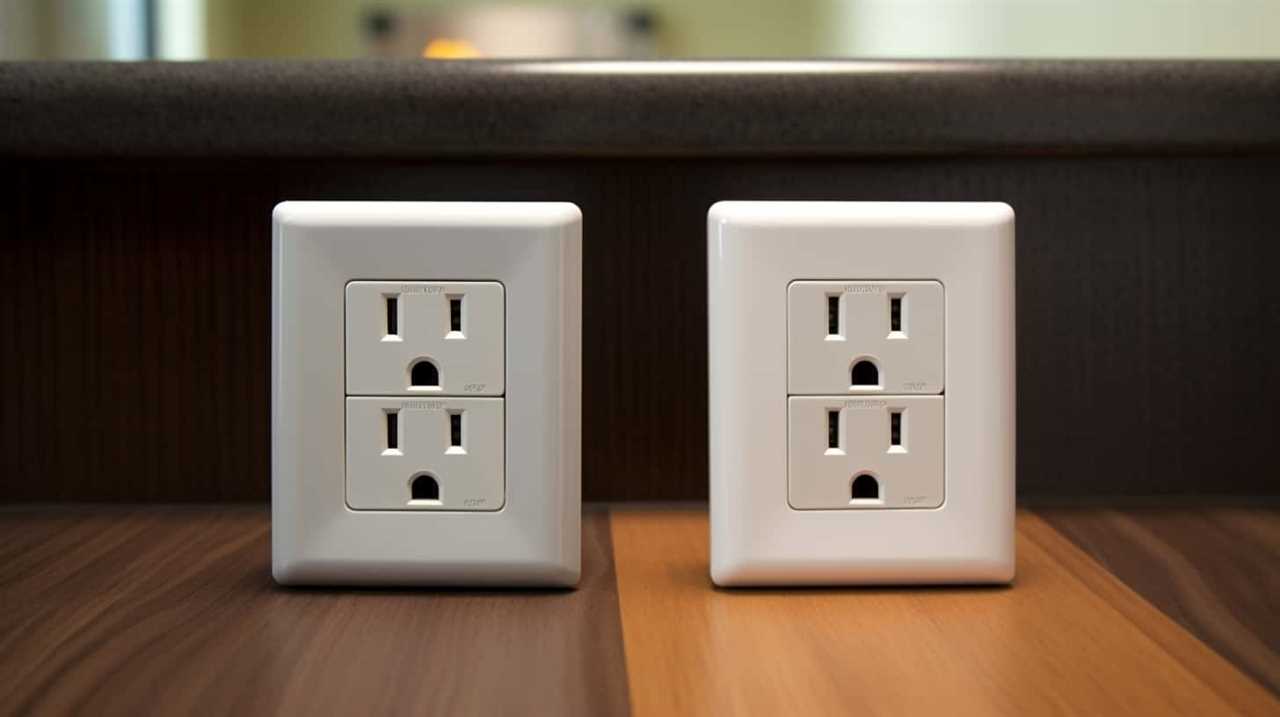
To achieve Energy Star certification, appliances must meet stringent energy efficiency standards set by the Environmental Protection Agency (EPA). These standards vary depending on the type of appliance, such as refrigerators, dishwashers, or air conditioners.
Appliances are tested in accredited laboratories to measure their energy consumption and performance. Additionally, manufacturers must submit documentation proving compliance with the required energy efficiency levels.
The certification requirements also include meeting specific criteria for energy-saving technologies, such as advanced sensors, improved insulation, and efficient components.
The certification process ensures that Energy Star appliances provide significant energy savings to consumers while reducing greenhouse gas emissions and protecting the environment.

Benefits of Energy Star?
The benefits of Energy Star appliances include energy savings, reduced greenhouse gas emissions, and environmental protection, all achieved through meeting the stringent requirements for Energy Star certification.
- Energy savings: Energy Star appliances are designed to be more energy efficient, which can result in significant cost savings on utility bills.
- Reduced greenhouse gas emissions: By using less energy, Energy Star appliances help to reduce the amount of greenhouse gas emissions released into the atmosphere, thus contributing to a healthier environment.
- Environmental protection: Energy Star appliances also have a positive impact on the environment by conserving natural resources and reducing the demand for electricity production.
- Energy Star ratings: The Energy Star program assigns ratings to appliances based on their energy efficiency, making it easier for consumers to choose products that will help them save energy and money.
Energy Star Appliances Vs. Non-Energy Star Appliances
When comparing energy efficiency, Energy Star appliances outperform their non-Energy Star counterparts. Energy Star appliances are designed to consume less energy while still providing the same level of performance as non-Energy Star appliances. This translates into significant cost savings for consumers over time.
These appliances are built with advanced technologies and innovative features that maximize energy efficiency, resulting in reduced electricity usage and lower utility bills. Additionally, Energy Star appliances often come with energy-saving modes and programmable settings, allowing users to further optimize their energy consumption.
Investing in Energy Star appliances not only contributes to a greener environment but also helps homeowners save money in the long run. By choosing Energy Star appliances, consumers can enjoy the benefits of superior energy efficiency and cost savings.

Tax Benefits of Energy-Efficient Upgrades
For tax year 2025, we can take advantage of tax benefits for energy-efficient upgrades. These tax benefits, in the form of tax credits, are designed to incentivize individuals and businesses to make energy-saving improvements to their properties.
Here are some key points to consider:
- Tax credits: By installing energy-efficient upgrades, such as solar panels or high-efficiency HVAC systems, you may be eligible for tax credits that can help offset the cost of the upgrades.
- Energy savings: Energy-efficient upgrades not only provide tax benefits but also result in long-term energy savings. By reducing your energy consumption, you can lower your utility bills and contribute to a more sustainable future.
By taking advantage of tax benefits for energy-efficient upgrades, you can’t only save money but also contribute to a greener and more energy-efficient world.
Now, let’s explore the available energy star appliance categories.

Available Energy Star Appliance Categories
Our available Energy Star appliance categories include refrigerators, washers, and dishwashers. Energy Star appliances are designed to be more energy efficient than standard models, offering numerous benefits and savings. By using less energy, these appliances can help reduce utility bills and lower energy consumption, resulting in a positive impact on the environment.
Energy Star refrigerators are equipped with advanced technologies that optimize cooling performance while minimizing energy usage. Washers with the Energy Star label use less water and energy, saving both resources and money. Dishwashers with the Energy Star certification have features like soil sensors and efficient water usage, ensuring effective cleaning while conserving energy.
Investing in Energy Star appliances not only provides long-term energy savings but also contributes to a greener and more sustainable future.
Now, let’s explore the changes in energy star tax deductions.
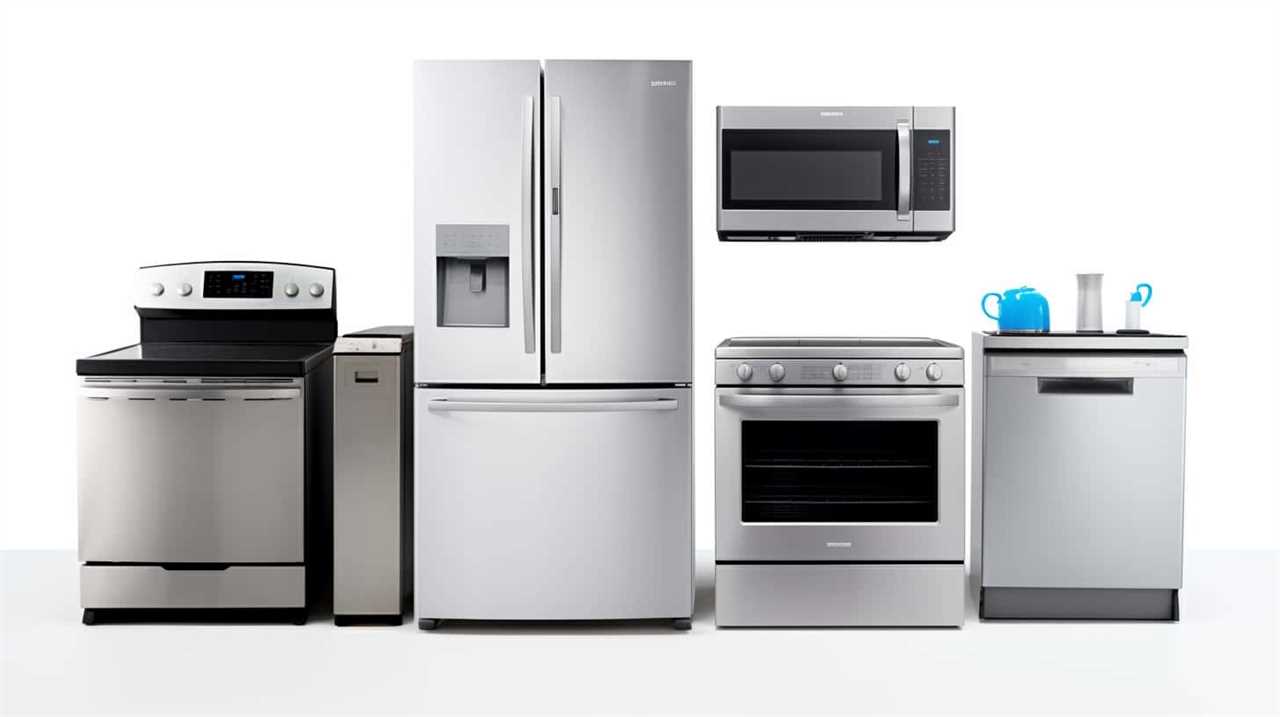
Changes in Energy Star Tax Deductions
There have been changes in the tax deductions for Energy Star appliances. Here are some key points to know about the changes in energy efficiency incentives:
- Energy Star tax credits have been extended through 2025, providing financial incentives for consumers to purchase energy-efficient appliances.
- The tax credits offer a percentage-based deduction of the cost of qualified Energy Star appliances, which can help reduce the overall tax liability.
- The amount of tax credit available varies depending on the type of appliance and its energy efficiency rating.
To claim the tax credit, consumers need to keep a record of their Energy Star appliance purchase and submit it with their tax return.
These changes in energy efficiency incentives aim to encourage the use of energy-efficient appliances and reduce overall energy consumption. It’s important for consumers to stay informed about these deductions to take advantage of potential tax savings while contributing to a greener future.
Tips for Maximizing Energy Savings
To maximize energy savings, we recommend adjusting the thermostat settings based on the time of day and our comfort preferences. By setting the thermostat a few degrees lower in the winter and a few degrees higher in the summer, we can reduce energy consumption and save money on our utility bills.

Another tip for maximizing energy efficiency is to properly insulate our homes to prevent air leaks. This can be achieved through sealing gaps and cracks, adding insulation to walls and attics, and using weatherstripping on doors and windows.
Additionally, using energy-efficient appliances and lighting can significantly reduce our energy usage. It’s also important to unplug electronics and appliances when not in use, as they still consume energy even in standby mode.
How to Determine Energy Star Eligibility
Now let’s talk about how to determine Energy Star eligibility.
There are specific criteria that appliances must meet in order to be Energy Star certified, including energy efficiency and performance standards.

The certification process involves testing and verification by independent laboratories.
Criteria for Energy Star
We can determine the eligibility of Energy Star appliances by examining specific criteria. These criteria are designed to ensure that the appliances meet the highest standards of energy efficiency.
Here are the key factors that must be considered:
- Energy Consumption: Energy Star appliances must consume less energy compared to standard appliances in their respective categories.
- Performance: These appliances must perform their intended functions efficiently, without sacrificing performance or quality.
- Environmental Impact: Energy Star appliances are required to have a reduced impact on the environment, such as lower greenhouse gas emissions.
- Testing and Certification: Appliances undergo rigorous testing by accredited laboratories to verify their energy efficiency and compliance with Energy Star requirements.
Certification Process for Eligibility
After examining the criteria for Energy Star appliances, we can now delve into the certification process that determines their eligibility. The certification process ensures that appliances meet the strict energy efficiency requirements set by the Environmental Protection Agency (EPA). To determine Energy Star eligibility, manufacturers must follow a thorough testing and verification process conducted by an EPA-recognized laboratory. This process includes testing the appliance’s energy consumption, performance, and features. Additionally, manufacturers must submit all relevant data and documentation for review. Once the appliance passes the certification process, it is authorized to carry the Energy Star label. This label helps consumers identify energy-efficient appliances and provides them with confidence that they are making a sustainable choice for their homes. By promoting energy efficiency, the certification process encourages manufacturers to develop more eco-friendly appliances and offers consumers energy efficiency incentives.

| Certification Process | |
|---|---|
| Testing and Verification | EPA-recognized laboratory conducts thorough testing of energy consumption, performance, and features |
| Documentation Submission | Manufacturers submit all relevant data and documentation for review |
| Energy Star Label | Appliances that pass the certification process are authorized to carry the Energy Star label |
Benefits of Energy Star
To understand the benefits of Energy Star appliances and how to determine their eligibility, let’s explore the process manufacturers go through to ensure these appliances meet strict energy efficiency requirements.
The Energy Star program, administered by the U.S. Environmental Protection Agency (EPA) and the U.S. Department of Energy (DOE), provides a way for consumers to identify energy efficient appliances that can help reduce utility costs and protect the environment.
Here are some key benefits of Energy Star appliances:
- Energy savings: Energy Star appliances are designed to use less energy, resulting in lower utility bills.
- Environmental impact: By reducing energy consumption, Energy Star appliances help reduce greenhouse gas emissions and combat climate change.
- Enhanced performance: Despite their energy efficiency, Energy Star appliances still deliver top-quality performance and functionality.
- Rebates and incentives: Many utility companies offer rebates and incentives for purchasing Energy Star appliances, providing additional cost savings.
Understanding the benefits of Energy Star appliances sets the stage for exploring the significant cost savings they can bring.

Cost Savings of Energy Star Appliances
Energy Star appliances offer significant cost savings on energy bills. By using advanced technologies and meeting strict energy efficiency criteria, these appliances consume less energy compared to standard models. This results in lower electricity or gas bills, saving consumers money in the long run.
Additionally, Energy Star appliances often qualify for rebates and incentives offered by utility companies, local governments, and federal programs. These energy star appliance rebates further enhance the cost savings for consumers.
The benefits of Energy Star appliances extend beyond financial savings. They also help reduce greenhouse gas emissions, protect the environment, and promote sustainable living.
Investing in Energy Star appliances not only saves money but also contributes to a greener and more energy-efficient future.
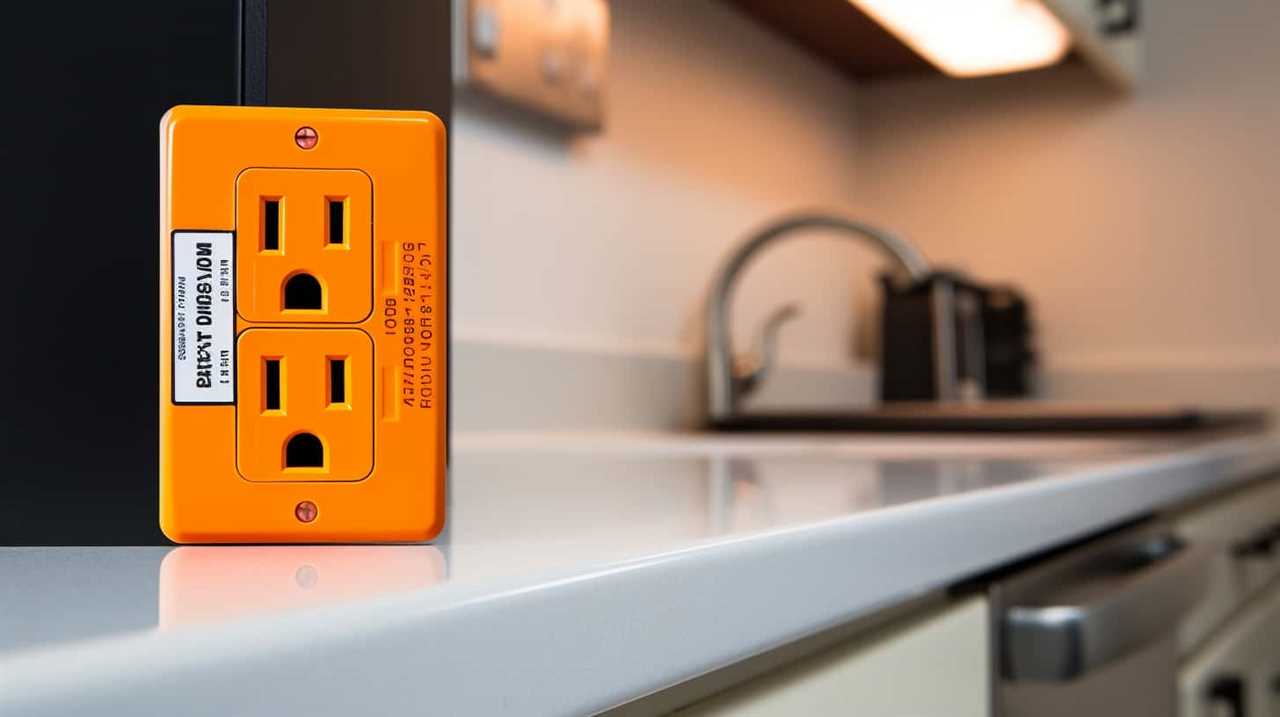
Benefits of Energy-Efficient Home Improvements
For us, the key to achieving energy savings and a more sustainable home lies in making energy-efficient improvements throughout our house. By investing in these upgrades, we not only reduce our energy consumption but also enjoy several other benefits:
- Tax incentives: Energy-efficient home improvements often qualify for tax incentives, allowing us to save money while making our home more environmentally friendly.
- Lower utility bills: Energy-efficient improvements, such as installing insulation or upgrading windows, can significantly reduce our energy usage, resulting in lower monthly utility bills.
- Increased comfort: These improvements help regulate indoor temperature, reducing drafts and creating a more comfortable living environment.
- Environmental impact: By reducing our energy consumption, we contribute to the overall effort to conserve resources and reduce greenhouse gas emissions.
With these advantages in mind, it becomes clear how energy-efficient home improvements can positively impact both our finances and the environment.
Transitioning into the subsequent section, let’s now explore the topic of energy star appliance rebates and discounts.
Energy Star Appliance Rebates and Discounts
When it comes to Energy Star Appliance Rebates and Discounts, there are several important points to consider.

First, there are specific eligibility criteria that homeowners must meet in order to qualify for these rebates.
Second, it’s essential to stay updated on the latest available discounts and promotions offered by manufacturers and retailers.
Lastly, it’s important to understand the overall benefits of Energy Star appliances, such as energy savings and environmental impact reduction.
Eligibility Criteria for Rebates
To qualify for rebates and discounts on Energy Star appliances, we must meet certain eligibility criteria. Here are the key qualifications for the energy star rebate process and energy star appliance qualifications:
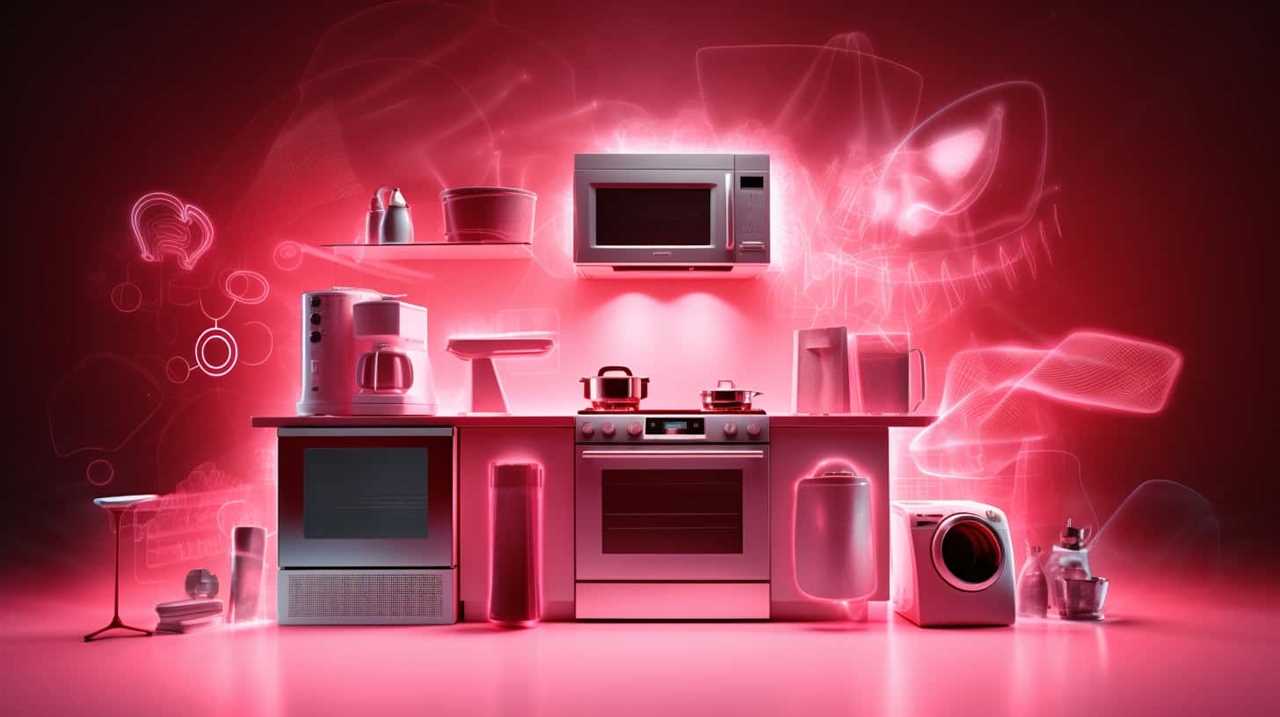
- Energy Efficiency: The appliance must meet the energy efficiency standards set by the Energy Star program.
- Certification: The appliance must be certified by the Energy Star program, which ensures that it meets the required energy efficiency criteria.
- Purchase Date: The appliance must be purchased within the specified time frame to be eligible for rebates and discounts.
- Documentation: You’ll need to provide proof of purchase, such as receipts or invoices, to apply for rebates and discounts.
By meeting these eligibility criteria, you can take advantage of the rebates and discounts available for Energy Star appliances.
Now, let’s dive into the details of the latest available discounts.
Latest Available Discounts
Now let’s explore the latest discounts available for Energy Star appliances, building upon our discussion of eligibility criteria for rebates.
Energy-saving rebates are a great way to save money while investing in energy-efficient appliances. Many utility companies and government agencies offer these rebates to encourage consumers to choose Energy Star certified products.
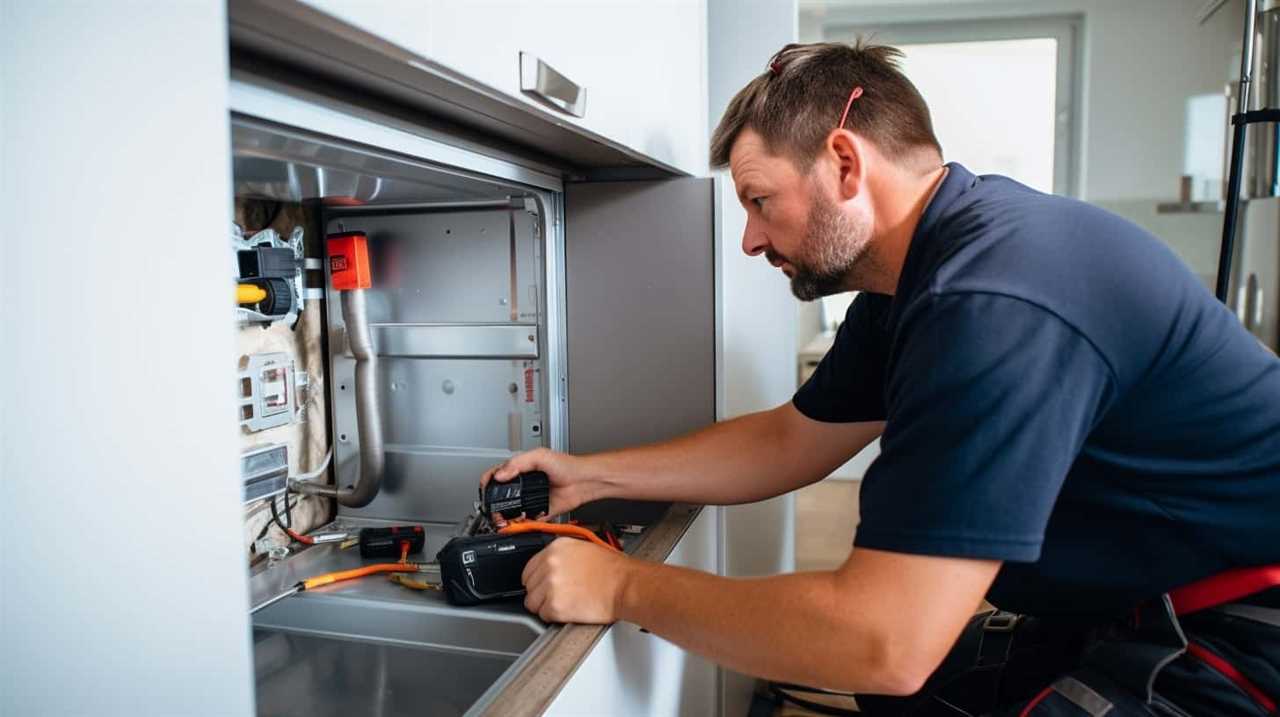
The amount of the rebate can vary depending on the appliance and the region, so it’s important to check with your local utility company or government agency for specific details. These rebates can range from a few dollars to hundreds of dollars, making it financially beneficial to choose Energy Star appliances.
Benefits of Energy Star
We love the benefits of Energy Star, including the rebates and discounts available for Energy Star appliances. Energy Star is a program that promotes energy efficiency and helps consumers make informed choices about energy-efficient technologies.
Here are some of the benefits of Energy Star:
- Energy Star ratings: Energy Star appliances undergo rigorous testing and meet strict energy efficiency criteria set by the Environmental Protection Agency (EPA). These ratings help consumers identify products that will save them energy and money in the long run.
- Lower utility bills: Energy Star appliances consume less energy, resulting in lower electricity bills. By choosing Energy Star appliances, consumers can save significant amounts of money over time.
- Environmental impact: Energy Star appliances reduce greenhouse gas emissions and help protect the environment. By using less energy, these appliances contribute to a more sustainable future.
- Rebates and discounts: Many utility companies and government programs offer rebates and discounts for Energy Star appliances, making them more affordable for consumers.
With these benefits in mind, let’s now explore the future outlook for energy star deductions.

Future Outlook for Energy Star Deductions
In our upcoming discussion on the future outlook for energy star deductions, we’ll explore the potential benefits of continued government support for energy-efficient appliances. Looking ahead, it’s evident that future trends will prioritize sustainability and energy conservation.
Energy Star appliances play a crucial role in achieving these goals by reducing energy consumption and minimizing the impact on the environment. With government support, the adoption of energy-efficient appliances is likely to increase, resulting in reduced greenhouse gas emissions and lower energy costs for consumers.
Furthermore, continued deductions for Energy Star appliances will incentivize manufacturers to develop innovative technologies that further enhance efficiency and sustainability. By encouraging the use of energy-efficient appliances, we can contribute to a cleaner and more sustainable future for our planet.
Frequently Asked Questions
Are There Any Limitations on the Types of Energy-Efficient Home Improvements That Qualify for Energy Star Deductions?
There are limitations on the types of energy-efficient home improvements that qualify for energy star deductions. However, the benefits of energy star appliances are still significant, as they can save money and reduce energy consumption.
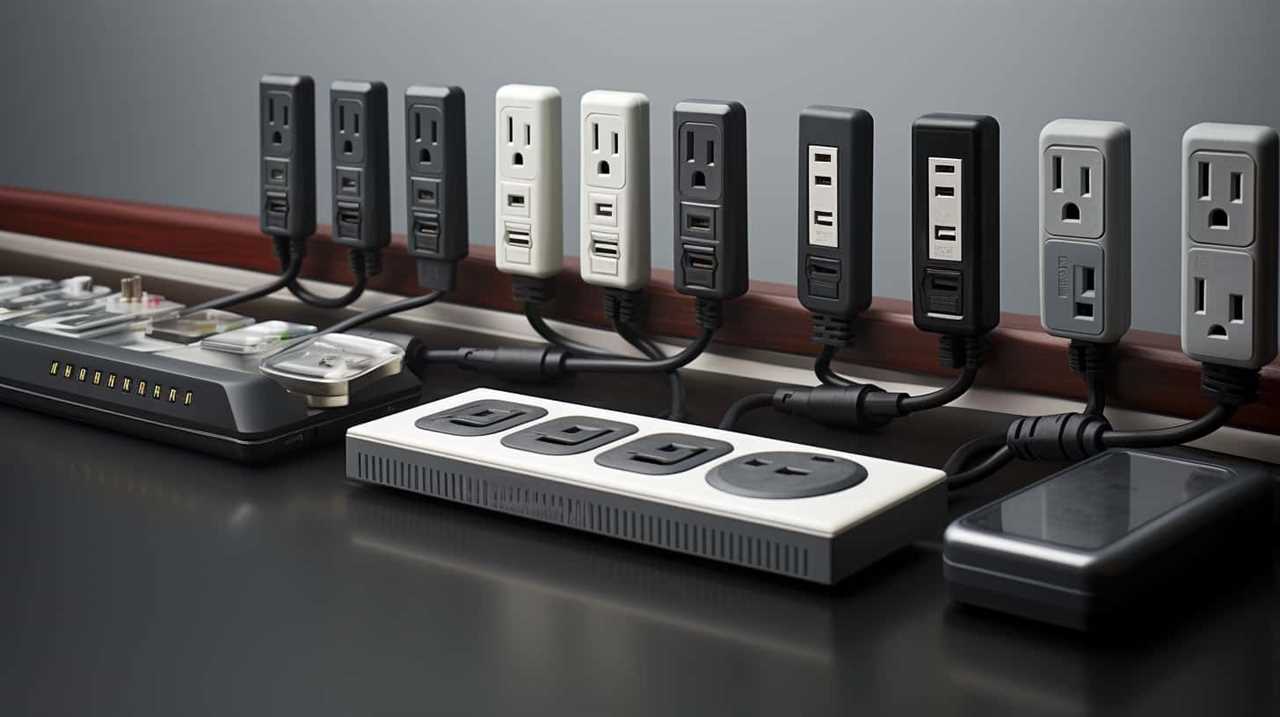
Can I Claim Both Federal Tax Credits for Energy Efficiency and State-Specific Energy Star Incentives for the Same Appliance?
Yes, you can claim both federal tax credits and state-specific energy star incentives for the same Energy Star appliance. However, eligibility for these incentives may vary depending on your specific state and the appliance you purchase.
How Do I Know if an Appliance Is Energy Star Certified?
To determine if an appliance is Energy Star certified, look for the Energy Star label. This label indicates that the appliance meets strict energy efficiency guidelines set by the Environmental Protection Agency and the Department of Energy.
Are There Any Income Limits or Restrictions for Claiming Energy Star Deductions?
There are income limits and qualifying restrictions for claiming energy star deductions. It’s important to check the specific guidelines and requirements set by the IRS to determine eligibility for these deductions.
Will the Energy Star Tax Deductions Continue to Be Available in the Future, or Are They Set to Expire?
Yes, the future availability of energy star tax deductions is uncertain. The expiration of these deductions could occur, but it is important to stay informed about any changes to tax laws.
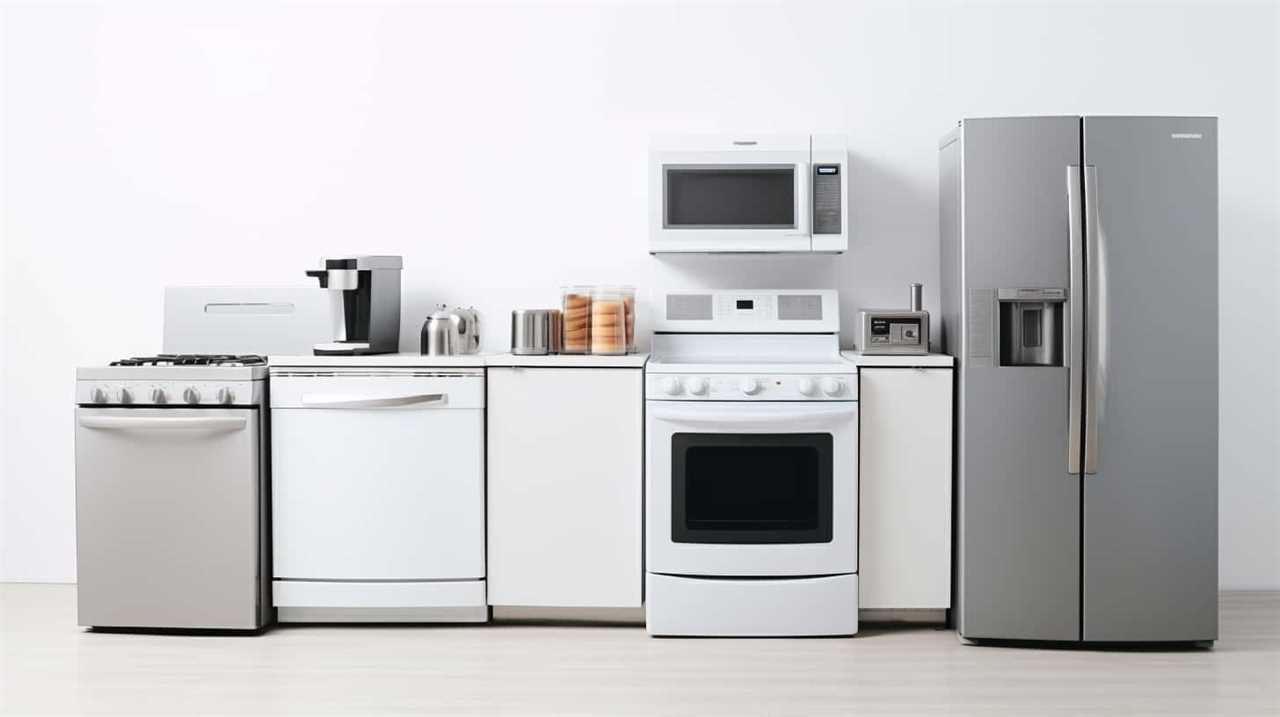
Conclusion
In conclusion, energy star appliances play a crucial role in reducing energy consumption and saving costs. While the deductibility of energy star appliances in 2025 is yet to be determined, it’s clear that these appliances offer significant benefits in terms of energy efficiency and cost savings.
As we await the future outlook for energy star deductions, it’s important to continue exploring state-specific incentives and federal tax credits available for energy-efficient upgrades. Stay tuned for potential updates and take advantage of the benefits that energy star appliances provide.










